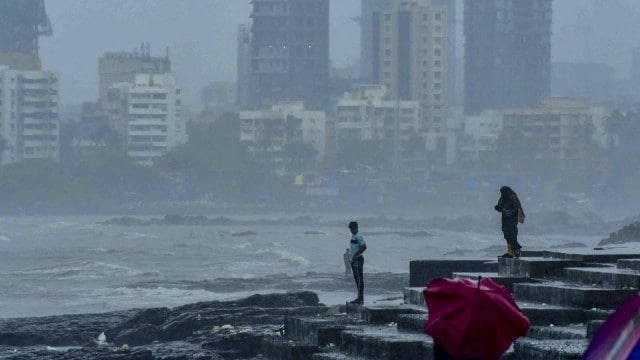Shakti intensifies into ‘severe’ storm, says IMD; rough sea, strong winds likely along Gujarat-Maharashtra coast
Wind speeds ranging from 60-100 kmph will prevail on account of Cyclone Shakti, due to which the IMD has warned fishermen against going into the Northwest Arabian Sea till Tuesday.
 IMD confirmed that Cyclone Shakti has strengthened into a severe storm over the Arabian Sea with winds up to 100 kmph. (PTI)
IMD confirmed that Cyclone Shakti has strengthened into a severe storm over the Arabian Sea with winds up to 100 kmph. (PTI)Cyclone Shakti, which developed in the Arabian Sea on Friday, has further intensified into a ‘severe’ storm on Saturday, according to the India Meteorological Department (IMD). As the storm, the first to develop in the North Indian Ocean basin in 2025, has moved significantly away from the Indian coast, there is no direct threat to the west coast.
“During the last six hours, cyclone Shakthi moved westwards with a speed of 13 kmph. It further intensified into a severe cyclonic storm (associated wind speed 90 to 100 kmph gusting to 110 kmph) and lay over the same region,” the IMD said as per satellite observations at 5.30 am on Saturday.
Cyclone Shakti was located 420 km west of Dwarka, 420 km west-southwest of Naliya, and 290 km south-southwest of Karachi in Pakistan. Rough sea conditions, squally weather, and high wind speeds ranging between 45-55 kmph gusting to 65 kmph will affect the Gujarat-Maharashtra coasts till Tuesday.
Gale winds, with packing speeds going up to 110 kmph, will affect the northwest and northeast Arabian Sea region on Saturday. Wind speeds ranging from 60-100 kmph will prevail till about Monday, owing to which the IMD has warned fishermen against going into the Northwest Arabian Sea region till Tuesday.
Over the past month, the Pacific Ocean has been very active and at least two major storms have hit the Philippines, China, and neighbouring coastal countries, causing massive damage. Typhoon Tapah (September 8), Typhoon Ragasa (September 20), Typhoon Neoguri (September 20), and Typhoon Bualoi (September 22) were the strong storms that affected the region, a couple of which re-emerged in the Bay of Bengal.
The North Indian Ocean basin, comprising the Arabian Sea and the Bay of Bengal, is prone to cyclones during the pre-monsoon (March to May) and the post-monsoon (October to December) periods.







